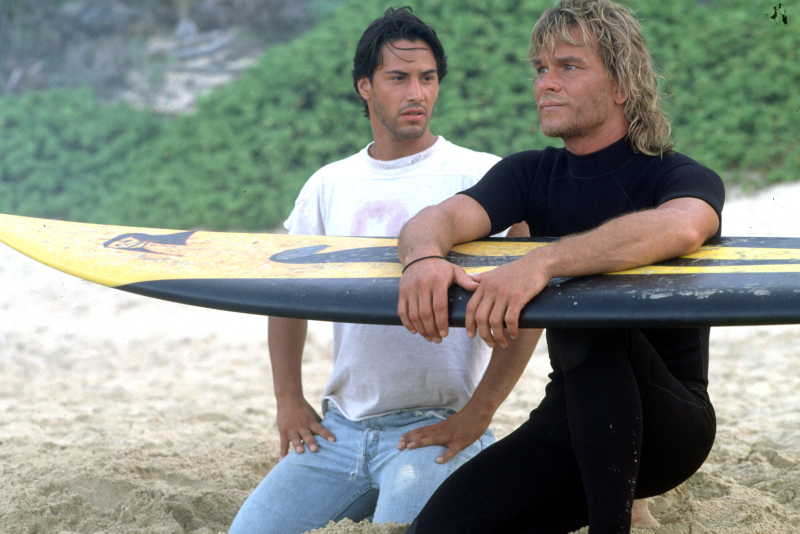Director – Kathryn Bigelow – 1991 – US – Cert. 15 – 122m
*****
A rookie FBI man goes undercover with a group of surfers, believing them to be a gang of bank robbers who disguise themselves as former US Presidents – milestone action movie is out in a 4K Restoration in UK cinemas on Friday, November 8th as part of Art of Action, a major UK-wide season celebrating the artistry of real action choreography at cinemas across the UK October-November 2024
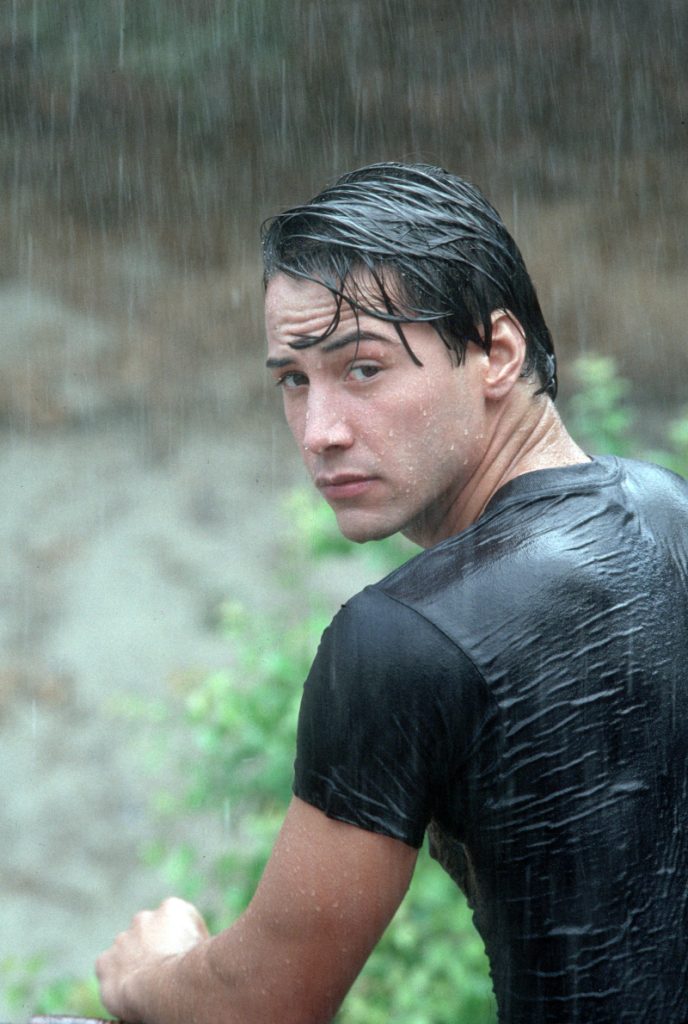
At a cursory glance, there’s nothing particularly remarkable about Point Break, a crime movie about bank robbers, surfers and undercover cops, except perhaps the juxtaposition of surfers on the one hand with cops and robbers on the other except as a route into making a film about cops undercover. Certainly, that juxtaposition pervades the film, with fresh out of training school, undercover FBI man Johnny Utah (Keanu Reeves) coming up against accomplished surfer Bodhi (Patrick Swayze) and his new age-y philosophy of life, which is all about living in the moment and experiencing the biggest rush. Those two concepts happen to embody elements that could potentially make a great action film. Point Break does exactly that. Even though it’s a 35-year-old film, it feels as fresh today as it did on initial release.
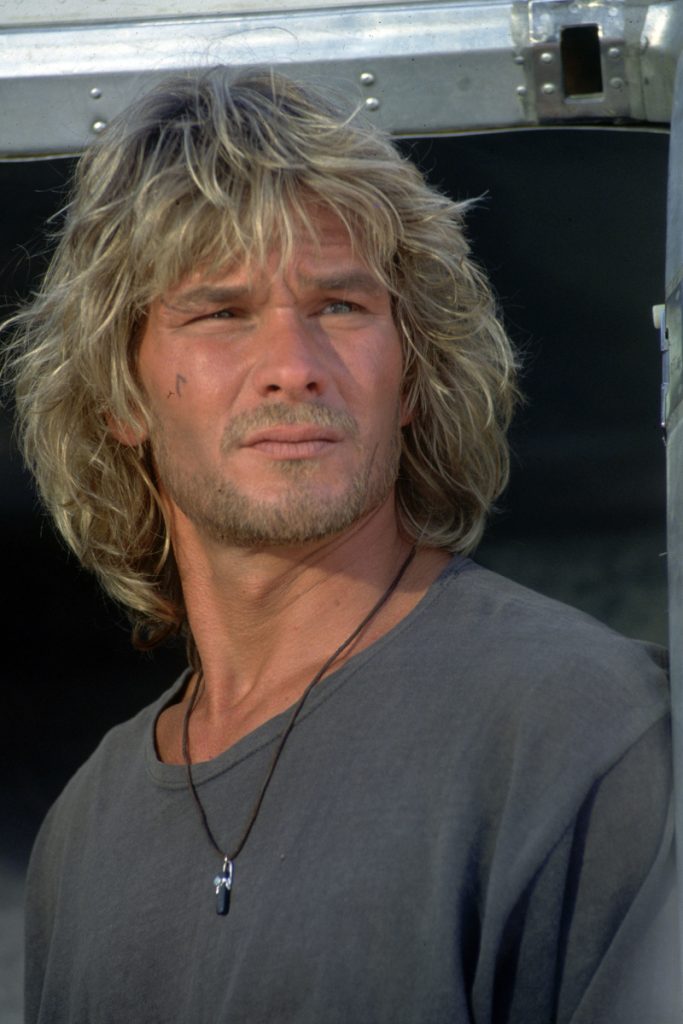
Reeves is at the centre of the film, cast for the first time as an action hero (roles would follow in Speed, Jan de Bont, 1994; The Matrix, Andy & Larry Wachowski, 1999; John Wick, Chad Stahelski, 2014 and their respective sequels). There’s a physicality about both him and Swayze here. Reeves notwithstanding, the FBI are as portrayed as spending most of their time sitting either in offices and briefings or in cars, with the occasional house raid thrown in for good measure. Johnny Utah is partnered with agent Pappas (Gary Busey), a loose cannon with unorthodox ideas who is the brunt of his colleagues’ humour and whose career has stalled, while their superior Harp (John McGinley) takes a constant delight in delivering withering put-downs to anyone on his team (we only really see him dealing with Reeves’ Johnny Utah).

A gang of four men, the self-styled Ex-Presidents, wearing rubber head masks of Reagan, Carter, Nixon, and LBJ, have been successfully robbing banks, pulling off their robberies in a short space of time (e.g. 90 seconds) and sticking to a preordained protocol to ensure that they never get caught. The FBI are stumped, but Pappas wins Utah’s confidence and tells him his theory – the four perps are surfers, using their takings to fund their lifestyle during the surfing season and committing no robbery outside of it.
Utah buys into the idea, and on his own time gets girl surfer Tyler (Lori Petty) to teach him the basics (playing on the untimely, recent death of her parents by mentioning that his own parents were recently killed in an accident). Through her, Utah soon falls in with her former boyfriend Bodhi and his largely male crowd. Bodhi is the sort of person who drags everyone out of the house in the middle of the night because a particularly good wave has just appeared. The surfing lifestyle is integral to who Bodhi, Tyler and their circle are; Johnny can feel that lifestyle starting to affect him. He also falls hard for Tyler.
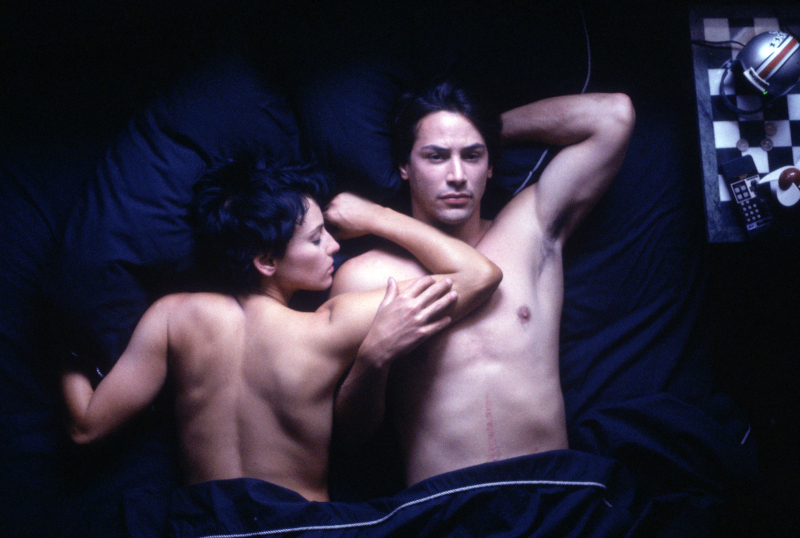
Eventually, Utah has a run-in with some guys at the beach who are about to beat him up when Bodhi intervenes and the two take on the group, beating them in a fight and then, at Bodhi’s insistence, swiftly walking away. Convinced he’s found the Ex-Presidents, Utah organises a raid on the confrontational surfers’ house; but it turns out that these are not the Ex-Presidents. Throughout all this, there’s a great deal of male bonding, with lots of images of male shoulders and / or backs in motion, surfing, partying, whatever. It’s a world into which the undercover Johnny is being slowly drawn in.
It’s noteworthy that director Bigelow is a woman, working in a genre (action, crime) generally considered, at least at the time, to be the preserve of men. What is portrayed in the film is indisputably a man’s world. While there is an undoubted female sensibility to the way Bigelow observes and records images, it’s a long way from what was considered feminine at the time. (I have no desire to suggest she was good at what she was doing because she was / is a woman, rather that she was good at what she was doing and happened / happens to be a woman, which perhaps makes a difference to her perception of the way things are but in no way impinges on her ability to direct generally or direct action specifically).
The contrast with the surfers and the FBI lifestyle couldn’t be more marked. It’s like Johnny Utah is living two completely separate existences. One is in the sea, early in the morning, or on the beach, or partying at night; the other, during daylight hours, is sitting around computers in the office or waiting around in cars on stakeouts eating takeaways.
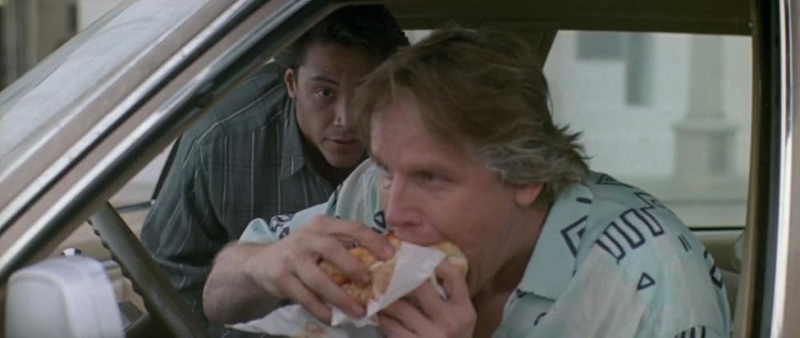
So it is that, following a lead, Utah and Pappas are sitting in their car watching the bank they believe the gang are about to hit. Pappas sends Utah out for some food while he reads the funnies in the paper. While Utah is gone, Pappas fails to notice the Ex-Presidents pull up in a car and enter the bank. The returning Johnny notices the car, then sees the gang leave the bank and get in, and after a brief car chase in which the pair lose their quarry only to find them again and crash their car, Johnny Utah is on foot and running after a president mask in one of the most amazing on foot chases in cinema.
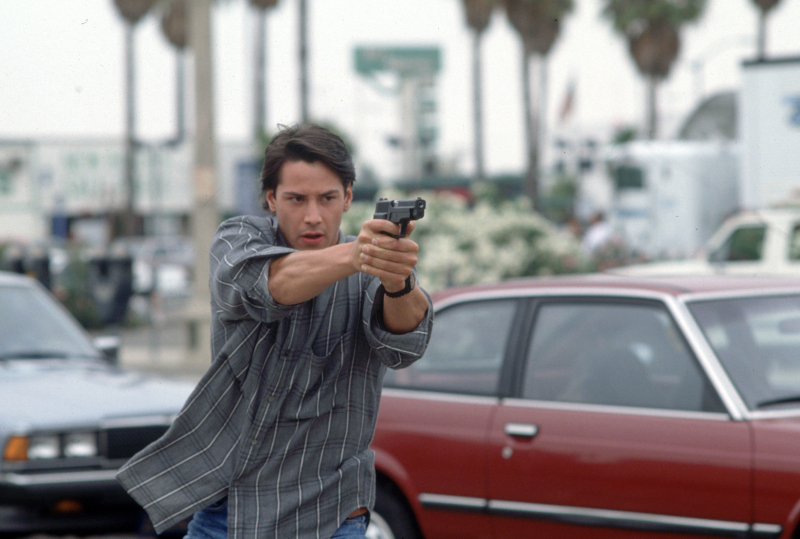
The moment Reeves starts running, you feel as if an action icon is being born before your eyes. The chase ends when during a jump he injured in the knee, but that’s not the point so much as what pursuer and pursued go through before that.
This paragraph – *** SPOILER ALERT (SORT OF) ***. If you’re watching the film or the first time, you might want to skip this paragraph rather than know what’s coming. So, as Reeves pursues his quarry on foot, the pursued starts running down alleys (lots of incredible point of view shots where the rapidly advancing camera squeezes through tiny widths between walls) before entering people’s houses through their gardens. There follow a series of remarkable, lengthy, single take shots (although there are a few rapid cuts in there as well). With no time to think, and everything happening on the run, the pursued goes into a house via a glass door and shuts it behind him; Johnny, so as not to lose momentum, crashes through the glass door and keeps going. As various houses and gardens are rapidly traversed, the masked quarry, desperate to stop his pursuer, throws at him anything he can lay his hands on, including, at one point, a live dog.
Which is not to say that this sequence upstages everything else in the film (as the extraordinary car chase does in crime drama We Own The Night, James Gray, 2007) because, incredible high point though it is, the scene plays as a completely integrated part of a flawlessly constructed, two-hour-long adrenaline rush. (even if you’re seeing the film for the umpteenth time.) Other equally physical sequences appear just as significant: learning to surf on the beach and in the sea, handball games on the beach, fights on the beach, a couple of bravura skydiving sequences, and an Australian finale in which Utah finds Bodhi at a beach where the latter has come to engage with the biggest wave of his surfing career, a once in 50 years event caused by freak weather.
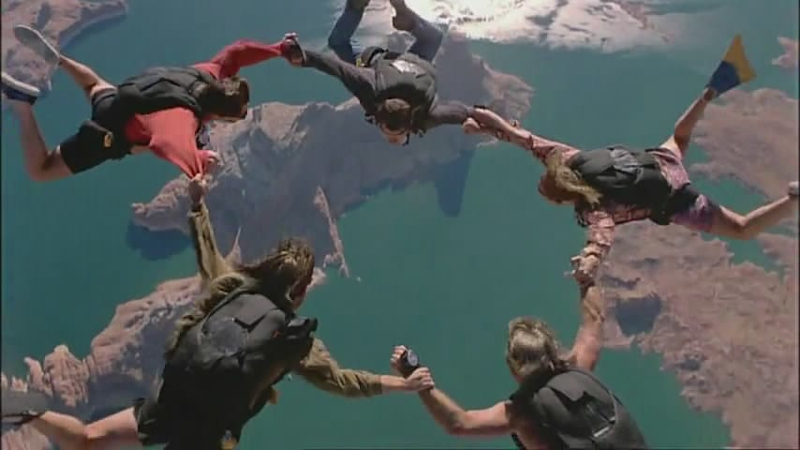
Like the chase on foot, the two skydiving sequences deserve special mention. In one, Bodhi leads his group of surfers (including Utah with damaged knee) to jump out of a plane. On the way down, the five of them form a circle in the air, holding hands, before dropping, one by one, into the sea below. In the other, which comes at a point in the plot where Bodhi has instructed one of his surfers to hold Tyler prisoner and kill her at the appointed time if Bodhi doesn’t show up, he jumps out of a plane with a parachute and the driven insane Utah jumps after him without a parachute, diving after Bodhi and catching up with him on the way down. A game of Chicken ensues: Bodhi won’t pull the ripcord, and Johnny can’t pull it unless he throws away his gun to free up his hand. These sequences are put together through a combination of shooting and editing trickery and real, life, Honest to God, what you see is what you get stunts. Swayze was a keen skydiver, and did many of his stunts himself, including one where he bids Johnny adios and then falls backwards out of the plane, clearly visible as he falls (for real) for around ten, heart-stopping seconds.
The context of all these kinetics is the relationship between the cop and the robber: the male-bonding, the bromance. At the end of the on foot chase, Johnny, injured and unable to run any more, has his gun trained on his quarry. Believing the person under the mask to be his buddy, he can’t bring himself to shoot him, instead firing impotently into the air.

It’s a moment encompassing all the contradictions of the cops and robbers genre; the cop who is like the criminal, who comes to understand him even more by spending time with him undercover, to the point where he is unable to do his job of catching the criminal. At one point, after some rowdy group male hijinks in the surfers’ beachside house, Lori Petty is heard to remark, “there’s too much testosterone here” before she leaves.
You might think that action, even if ostensibly about men, is proof that action is a male genre. This extraordinary film, directed by a clearly competent woman, is proof that it need not be. As such, it provides a perfect centrepiece for the upcoming BFI season.
Point Break is out in a 4K Restoration in cinemas in the UK on Friday, November 8th as part of Art of Action, a major UK-wide season celebrating the artistry of real action choreography at cinemas across the UK October-November 2024.
Trailer:
Season Trailer:
